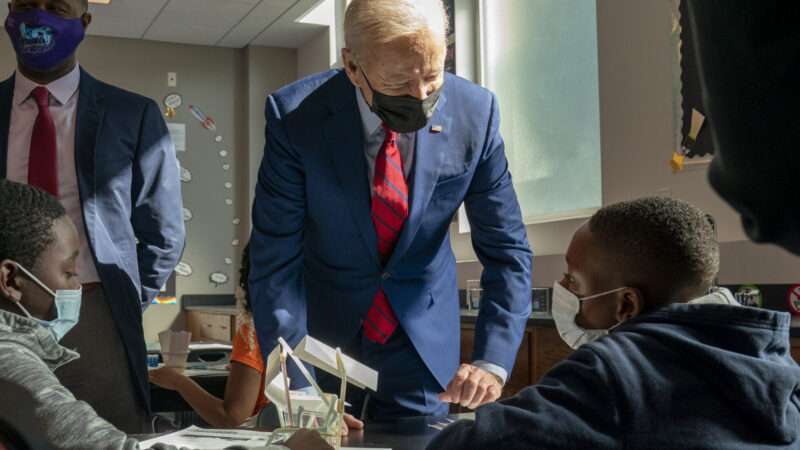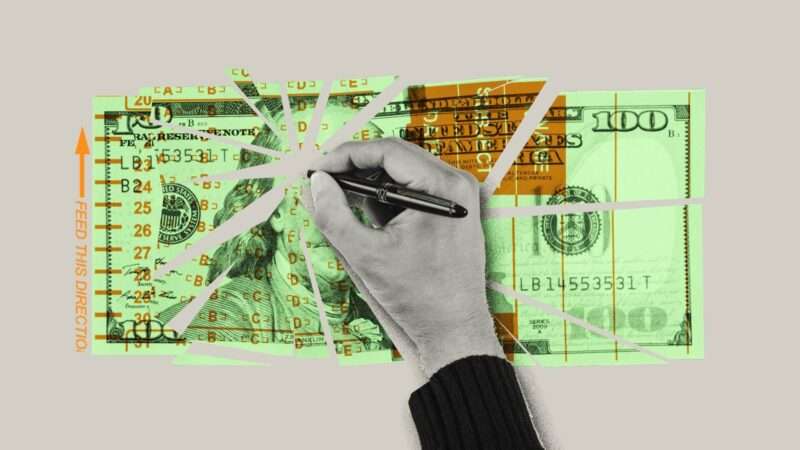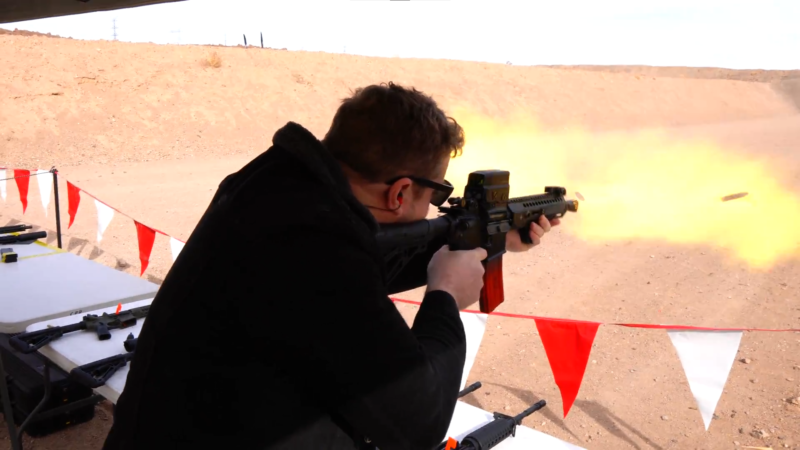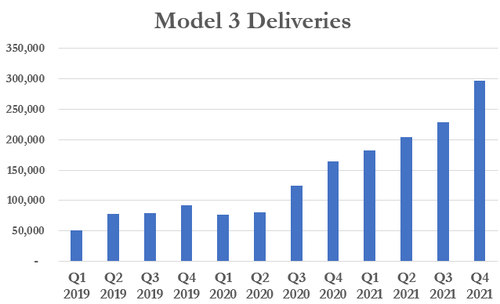Very few people in the U.S. have had the experience of firing a fully automatic firearm, since even in a country awash in hundreds of millions of legal firearms, only a few hundred thousand are capable of full-auto firing. For the average person to own one requires extensive government paperwork and fees on top of the artificially inflated five- or six-figure price tag for the guns themselves. Realistically, it’s not possible for all but the richest shooters.
SHOT Show, the world’s biggest gun show, descended on Las Vegas in January after a pandemic-induced year off. Before the buyers scurried around the floor of the Venetian Expo trying to secure stock from salesmen with fewer offerings than in years past, many made their way to a massive outdoor range to test out the offerings. I went along with them.
The desert range was more deserted than usual thanks to many of the biggest gun companies being scared off by the omicron COVID variant. The ammo shortage was evident too, even at the industry’s own trade show. What used to be 20- or 30-round demos were cut to five or 10.
A few of the full-autos were there as demos for law enforcement or military buyers who are, as is often the case with gun laws, exempted from the full-auto ban enforced against everyone else. Many were meant in essence to say to normal gun enthusiasts, “Hey, look at this cool gun. Don’t you wish you could own this? Anyway, when you’re done with the fun gun, here’s what you can actually buy.”
Some available to shoot are standard full-auto versions of guns that are also popular in their semi-automatic configurations—the cousins of guns like the AR-15, AK-47, or Ruger 10/22 but with that one extra position on the safety selector which lets you fire multiple rounds with one trigger-pull and thus turn the fun up to 11. Don’t underestimate how fascinating a full-auto 22 LR can be to shoot—it’s like a grown-up version of those full-auto BB guns you use to blast out the paper with the red star at the boardwalk.
Then you get into the belt-fed guns: higher-caliber machine guns designed to be fired from a bipod or tripod. These get more fun the faster the rate of fire and the bigger the round–though, in my opinion, a bigger round beats a faster rate of fire. The Minigun is hell of a lot of fun for the half second or so it takes to spit 100 rounds, but it can’t match what it’s like to fire John Moses Browning’s Ma Deuce in an enclosed range—the concussion of every round fired rattles everything in you.
But the short-barrel rifles provide the special thrill of shouldering a machine gun, and that’s how you experience the full force of what a weapon does as you hold down that trigger and blow $50 of ammunition in the blink of an eye. Shorter barrels have the added effect of making the muzzle blast bigger and much closer to you, amping up the splash of fire and heat you get to feel.
A short-barrel AR without a flash suppressor, though? That may be my dream full-auto. While my writing about guns professionally often affords me the opportunity to shoot them, a writers’ salary means I’ll likely never be able to actually own one of those guns.
That’s because of the National Firearms Act of 1934 (NFA).
The NFA was passed in response to the crimes of famous gangsters such as Al Capone, John Dillinger, and the aptly-named Machine Gun Kelly. It was an early 20th century attempt to ban certain kinds of guns and accessories by registering and taxing them out of existence. It instituted a $200 tax—over $4,000 in today’s money—on all silencers, short-barreled shotguns and rifles, and any gun capable of fully automatic fire.
The government then created a registry overseen by the Bureau of Alcohol, Tobacco, Firearms and Explosives (ATF) to enforce the tax—a bureaucracy that can take upward of nine months to process an application. Anyone who does register a machine gun with the ATF must also agree to random searches of the property where it’s registered.
The $200 tax stamp is more manageable today since Congress didn’t pin its cost to inflation. Registration of NFA items such as silencers have skyrocketed to more than 2.6 million as of last year. But a 1986 amendment has prevented the same outcome for machine guns.
That year, the Senate attached a machine gun ban to the Firearm Owners Protection Act. Newly produced machine guns can no longer be sold or transferred to civilians so that law effectively permanently restricted the available pool of transferable machine guns to a few hundred thousand.
The ATF currently reports having 741,146 machine guns in their registry. However, a 1994 Department of Justice (DOJ) report shows only around 240,000 registered machine guns nearly a decade after the new sales ban went into place. That suggests more than half a million of the registered machine guns aren’t actually transferable to normal civilians and are likely owned by law enforcement agencies or gun dealers with special licenses (some of whom will rent them out to civilians on a per-shot basis).
Severely restricting the supply has naturally sent the price of machine guns into the stratosphere. It’s extremely difficult for a civilian, even one with no criminal record and the patience to go through the monthslong registration process, to buy any fully automatic gun. The very cheapest ones on the open market go for around $10,000. A gun that’s little more than a metal tube and a spring which initially cost a few hundred dollars to produce can go for over $13,000.
A civilian can build a semi-automatic AR-15 from parts for around $600. A fully-automatic M-16 or M-4, which shares nearly the same design but has a different fire-control mechanism starts at around $25,000. Prices only go up from there. Thus a gun that costs a few hundred dollars to build can sell for as much as a luxury car or even an exotic supercar.
As with most gun regulations, there are workarounds to get something like the full-auto experience without spending your life savings or registering with the government. Recently-banned bump stocks help a shooter harness the recoil of a round going off to more quickly press a semi-automatic’s trigger and fire rounds in much quicker succession than traditional shooting methods. Binary triggers accomplish the same effect by using both the pull of the trigger and its release to fire a round.
Each method gets closer to the firing rate of slower full-auto guns, and bump firing can even be accomplished without a stock or any specialized equipment. But neither is as controllable or, ultimately, as fun as true full-auto fire.
Explaining how fun full-auto guns are to shoot isn’t likely to convince many gun-control activists they ought to be made legal. The idea that a free citizenry should have access to the same weapons its soldiers do, at least at the individual level, is even less amenable to most who favor stricter gun regulations.
But how much good, even in gun-controller terms, has the ban on full-auto guns accomplished? That’s a lot harder to answer. I’m not aware of any data that suggest many crimes were committed with registered machine guns between 1934 and the 1986 ban. There also isn’t great data on how often machine guns, or their workaround devices, are actually used in crimes since that ban.
The ATF doesn’t report how many crimes are committed each year with registered machine guns. Though the DOJ reported only .1 percent of traces in 1994 involved machine guns and “other” guns, even that report doesn’t separate illegally unregistered machine guns from legally registered ones.
Similarly, the ATF told the Washington Free Beacon in 2017 there are only about 44 prosecutions per year involving silencers. This has led some within the ATF to call for removing the sound-suppressing devices from the NFA’s purview. Ronald Turk, an associate deputy director at the ATF, wrote in a 2017 internal memo leaked to the press that “given the lack of criminality associated with silencers, it is reasonable to conclude that they should not be viewed as a threat to public safety necessitating [National Firearms Act] classification, and should be considered for reclassification under the [Gun Control Act].” Since machine guns appear to be even less commonly used in crimes than silencers, his logic could be applied to them as well.
That logic can cut both ways, though. If NFA detractors can argue the lack of crime committed by those weapons is proof that the law only burdens the law-abiding, NFA boosters can say that lack of crime is proof the law’s regulations work very well and should be extended to other guns such as the semi-automatic AR-15 or perhaps even every gun. That’s despite the fact that rifles outside the NFA, which AR-15s are only a subset of, are already rarely used in crime: Recent FBI reports indicate only about 300 of the 15,000 or so murders per year involve a rifle. NFA proponents would surely argue that number could be brought down even further if fewer people owned them with far greater government oversight.
Machine guns are not commonly used in crimes, especially ones that aren’t registration violations. But they have been used in some high-profile acts of mayhem, including a pair of robbers who used ARs and AKs illegally modified for fully automatic fire in a failed 1997 bank robbery attempt in North Hollywood. The two fired 1,100 rounds and injured 20 people before being killed by police.
Full-auto workarounds were also involved in one of the most high-profile shootings in American history. A shooter used ARs equipped with bump-fire stocks to kill 58 people at a 2017 music festival in Las Vegas. It is the only instance of bump-fire stock being used to commit a crime and it’s not clear how much bump firing actually added to the carnage, but it tarnished the devices enough that Donald Trump’s administration outlawed not only their sale but also their possession.
Binary triggers and other workarounds are very likely to attract further attention during the Biden administration, which is already taking a more aggressive approach to regulating devices that operate in the NFA’s gray area. President Joe Biden is currently working toward unilaterally banning pistol brace devices the ATF used to say complied with the NFA, but now say are designed to circumvent the law’s ban on short-barreled rifles; millions of those devices must be either registered or destroyed if the proposed rule is adopted.
So, while they lack a treasured place in a crook’s arsenal, If you want to own a machine gun or even something remotely like it, it’s probably not going to happen anytime soon—even if you make a decent living and have never committed a crime.
If you can manage to get an invite to the gun industry’s next range day to experience them, this shooter advises you: Definitely take it.
The post Shooting the Guns You Can't (Realistically) Own at the Gun Industry's Range Day appeared first on Reason.com.
from Latest – Reason.com https://ift.tt/3KEZyCO
via IFTTT









